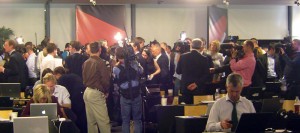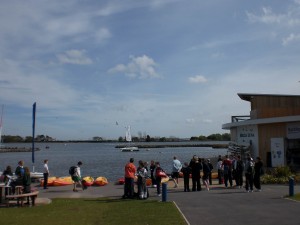This week see’s the 25th Showman’s Show at Newbury Showground, Etherlive will be exhibiting on two stands (one indoors in the warm and one outside) demonstrating some of the latest event technology solutions. Press release follows:
For further information contact:
Becky Martin-Jones / Mark Hook
www.ascentpr.co.uk
etherlive@ascentpr.co.uk
T. 01454 629 741
Cashless payments and next generation wireless infrastructure hailed as priorities for 2011 event technology
October 2010 – Etherlive is hailing cashless payments and next generation wireless infrastructure as the key innovation priorities for the 2011 events season.
The event technology specialist, exhibiting at this year’s Showman’s Show[1], is exploring new opportunities to introduce cashless payment systems. This follows a pilot scheme this summer at WOMAD, which replaced paper-based crew meal tickets with electronic cards. In addition, Etherlive is currently planning trials of next generation wireless technology in advance of next year’s festival season.
Tom McInerney, event director at Etherlive explains, “We’ve had a busy 2010 season providing core communications technologies to some of the UK’s most prestigious events. We are now dedicating some significant time to delivering continued value and innovation by trialling new technologies including our 4G offering. Having a secure technology infrastructure with extended coverage means that event organisers have a sound foundation for new services like CCTV, off site sound monitoring and audience interaction.
“Working with festivals such as WOMAD has shown us how effective cashless payments can be and we’ll be looking at new ways to apply this technology. RFID technology is ready to be deployed in volume at festivals and the installation at WOMAD was a first.
“These are exciting times for the event sector – technology has so much potential to make a difference to user experience, and the bottom line of the event organisers.”
Etherlive will be exhibiting on stands 67 and 168 at Showman’s, which takes place on the 20-21st October at the Newbury showground.
About Etherlive
A successful event depends on great performances. From WOMAD and The Green Man Festival to the Southampton Boat Show and the Three Counties Show, Etherlive is the one that makes IT work. Etherlive sits behind the scenes delivering reliable Wi-Fi internet, telephony, laptops, PDQs and interactive messaging. Whether in a field or a building, Etherlive makes connectivity simple.
http://events.www.etherlive.co.uk
[1] Showmans, 20-21st October – http://www.showmans-directory.co.uk/theshow.asp







